Backlinks are a crucial part of SEO. If you’ve got other sites talking about your blog, it signals to search engines that your content is worth noticing, and they’ll start directing more users to your website.
We recently wrote a guide to building a backlink profile. Today, we’ll talk about what to do next: finding backlinks, evaluating them, and keeping your profile healthy.
Why backlinks matter for SEO
Backlinks are crucial for SEO because search engines interpret them as indicators of your site’s credibility. Links from reputable sources can improve your search rankings, making your content more visible to readers.
You can maintain this visibility with regular backlink analysis, identifying valuable links and removing potentially harmful ones. But your analysis shouldn’t stop there. Examining your competitors’ backlink profiles can also reveal new growth opportunities.
For example, discovering which sites link to similar content might lead to potential link exchanges or guest article opportunities, helping you build a stronger backlink profile.
How to find backlinks to a website
The first step in profile analysis is to check how many backlinks your site has and where they’re coming from. Fortunately, there are plenty of tools for that.
Let’s start by looking at two free options.
1. Google Search Console
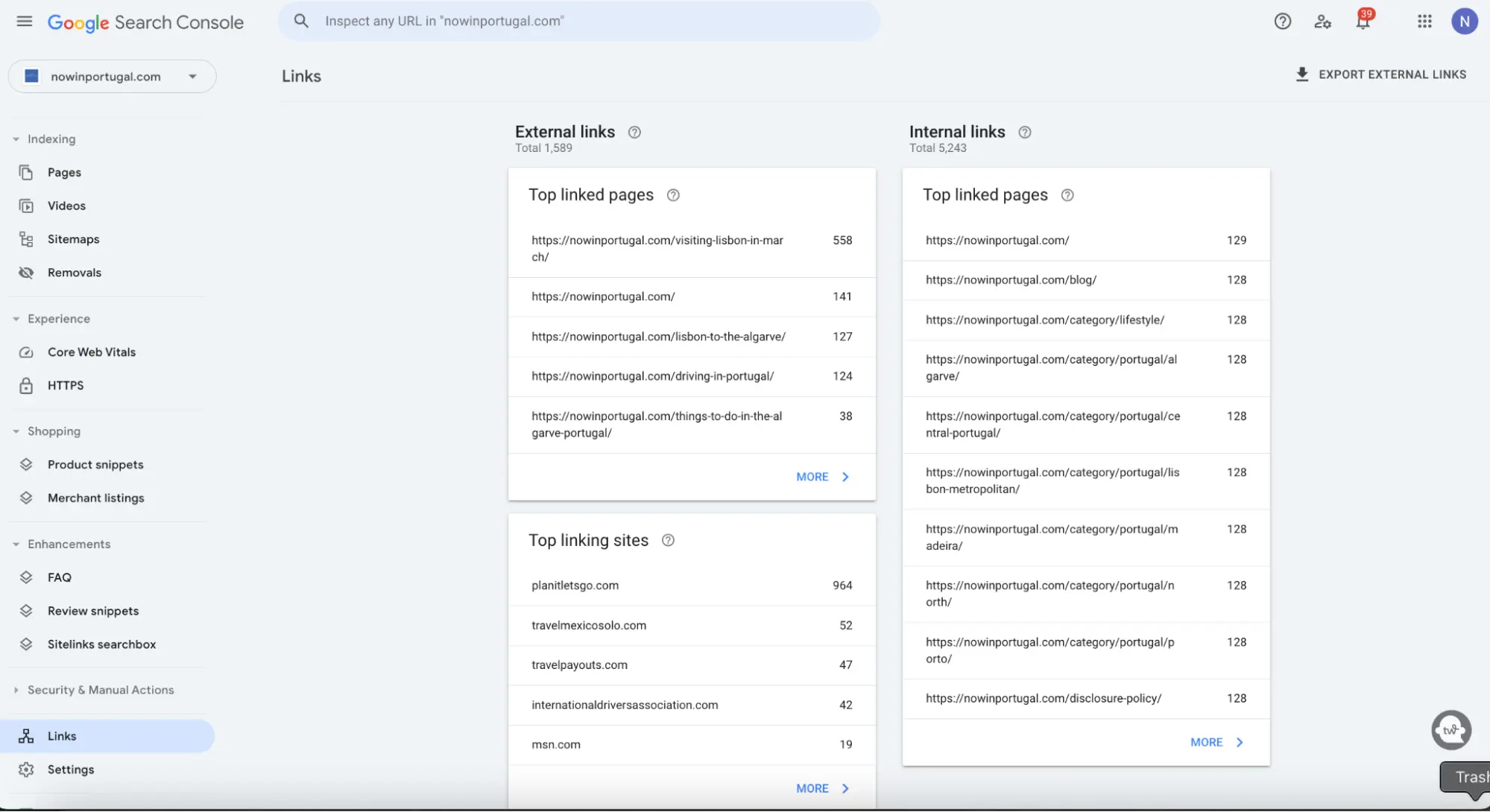
Google Search Console (GCC) is a popular free service for backlink analysis. Here’s how it works:
- Navigate to Google Search Console and sign in with your Google account.
- In the dashboard, choose your website property.
- In the left-hand menu, click Links to access the link report.
- Here you’ll see data on external links:
- Top Linked Pages: Which of your pages have the most backlinks.
- Top Linking Sites: External sites that frequently link to your content.
- Top Linking Text: The anchor text used in backlinks to your site.
- To export the data::
- Click on the Export External Links button.
- Choose More sample links for a full backlink profile or Latest links for just recent activity.
- Select your preferred format (CSV, Excel, or Google Sheets).
2. Bing Webmaster Tools
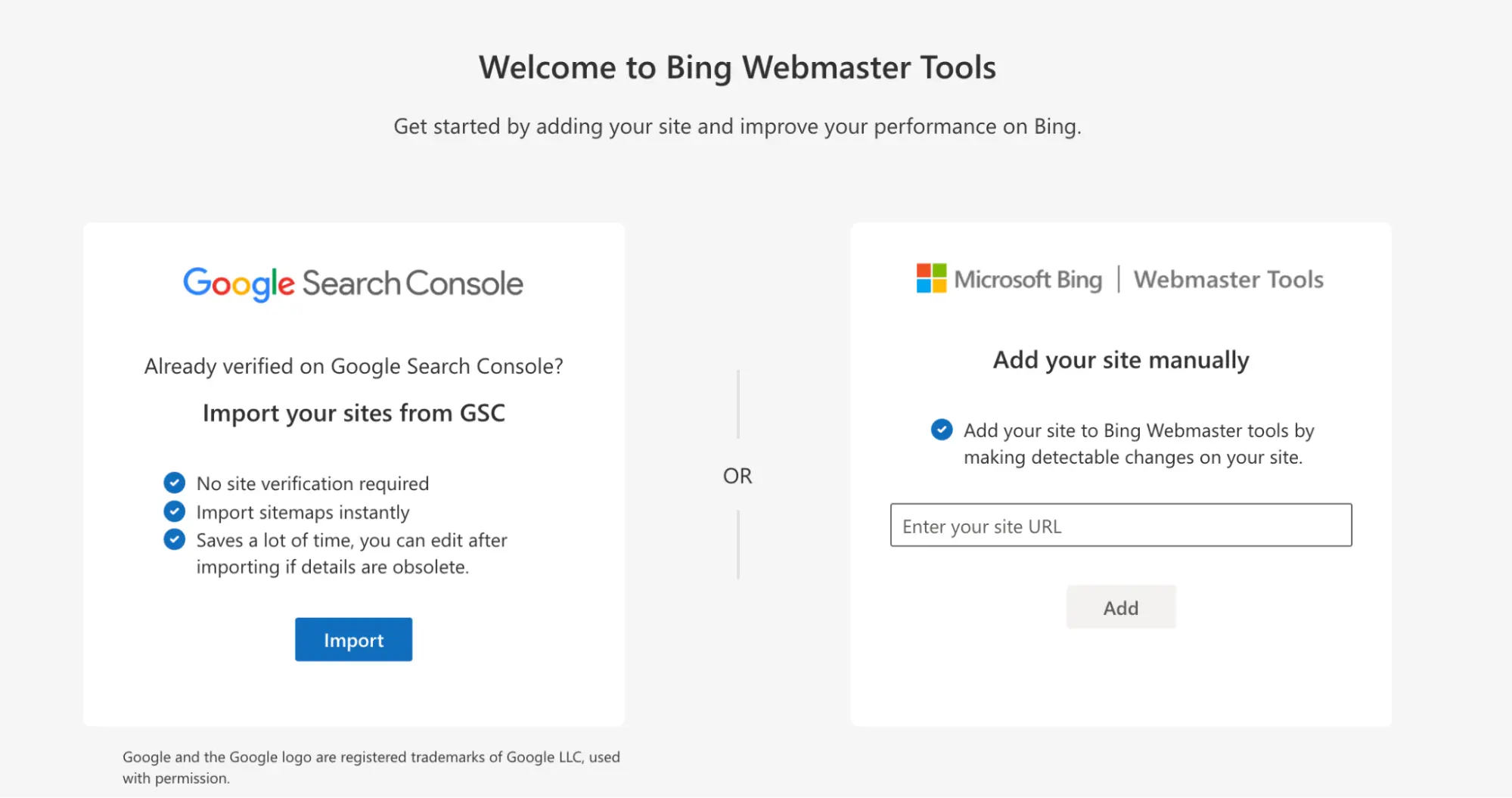
With Google’s updates hitting hard, the underdog Bing is getting a second look. Here’s how to check backlinks using Bing Webmaster Tools:
- Visit Bing Webmaster Tools and sign in with your Microsoft account.
- You can either add your site manually by entering the URL and completing verification (like adding a meta tag or XML file) or import it directly from Google Search Console if you already have it connected.
- To see the backlinks report, go to SEO → Backlinks in the menu on the left.
- Once verified, click Backlinks in the menu to view the top referring domains and anchor links. Click Detailed Reports for more insights.
- If you want to download the data, click Download All.
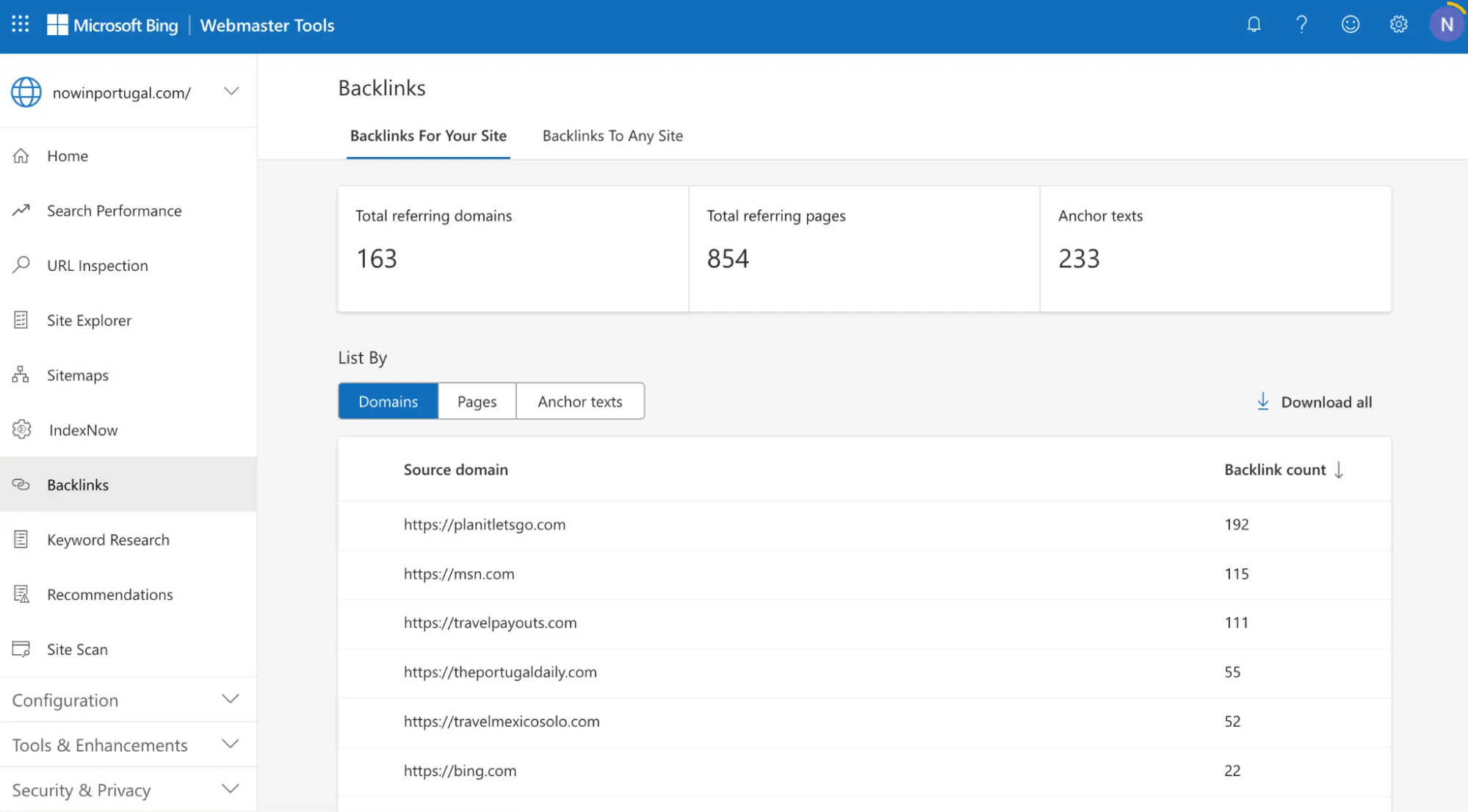
Now, let’s look at some paid tools.
3. Ahrefs
Ahrefs provides users access to comprehensive, real-time backlink data, which helps with detailed competitor analysis and accurate SEO insights. Its analysis includes metrics like domain rating, referring domains, and anchor text distribution. Plans start at $129 per month.
4. Semrush
Semrush offers features such as backlink categorization, anchor text analysis, and toxicity scores to flag potentially harmful links. Semrush also tells you which sites link to your competitors, uncovering new link-building opportunities. Prices start at $129.95 per month or $117.33 if you pay annually.
5. SE Ranking
SE Ranking makes tracking your backlink profile simple, with automated alerts for new and lost links. It also offers competitor backlink analysis and is praised for its user-friendly design. The Essential plan is $52 per month.
What to do after finding backlinks
Once you’ve identified your backlinks, the next step is to make the most out of them. Here’s how:
Evaluate link quality
- Authority: Check the Domain Authority of each linking site. It’s an imperfect measure, but it’s likely that high-authority sites pass more SEO value to your site.
- Relevance: Ensure the content on the linking site is relevant to your niche. Links from similar sites often have a stronger impact.
- Anchor text: Look at the anchor texts used for your links. Ideally, these should be natural and relevant, as they help search engines understand your site’s content.
- Dofollow vs. nofollow: Dofollow links pass on “link juice,” boosting SEO directly, while nofollow links don’t. Both have their uses. Dofollow links have more impact on rankings, while nofollow links can still drive valuable referral traffic or build brand awareness. They’re often used in sponsored posts, paid advertisements, or user-generated content, where the link aims to inform or direct users rather than influence rankings.
Disavow toxic links
If you find toxic links (ones from spammy or irrelevant sites), you can use Google’s Disavow Tool to exclude them from your backlink profile. This helps protect your site’s credibility by signaling to Google that you don’t want these links to influence your SEO.
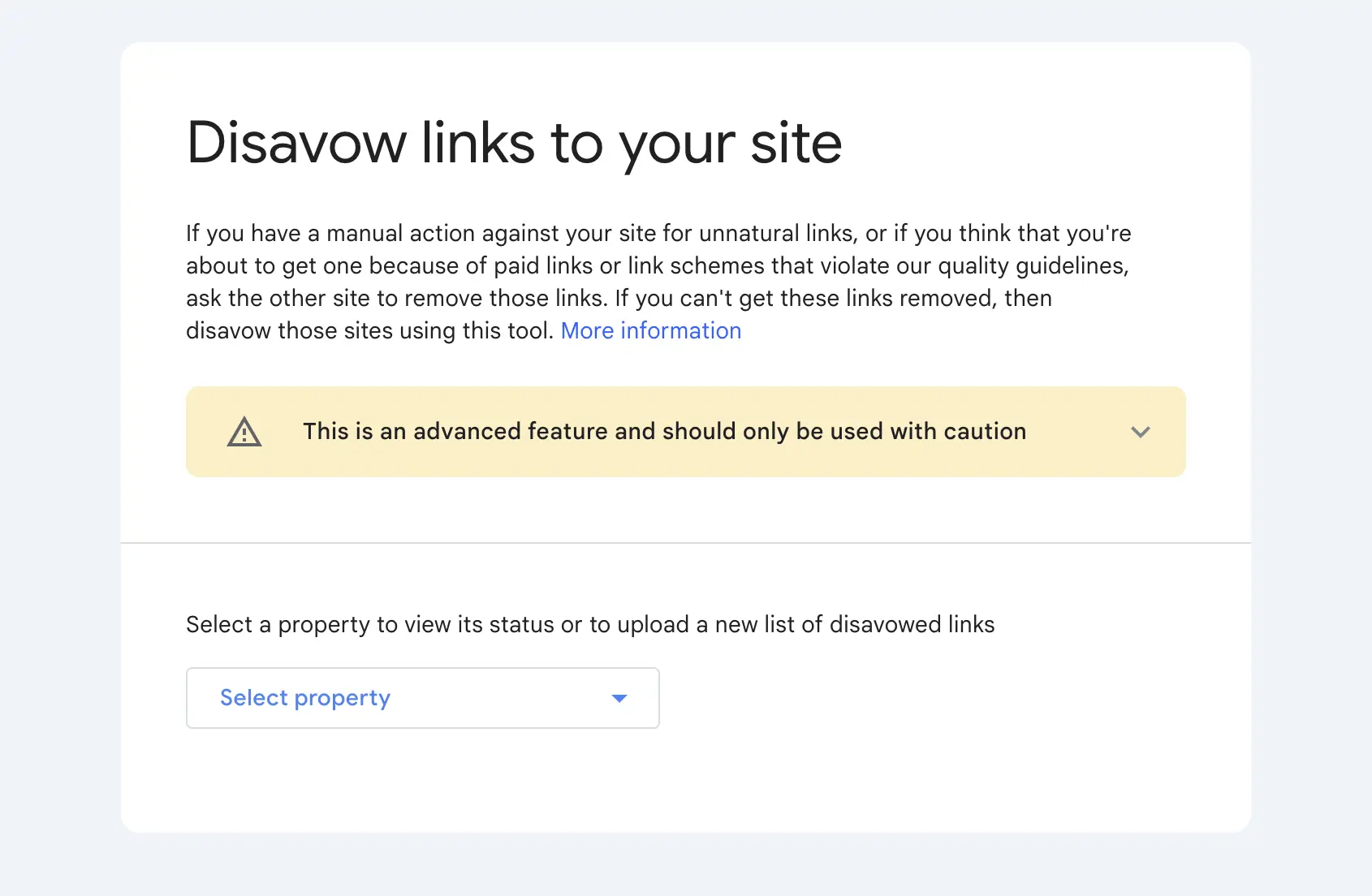
⚠️ This should only be used for extreme cases, such as when you have many harmful links and contacting the site owner isn’t possible. Removing regular or low-quality backlinks you simply don’t like can harm your site’s link equity and overall SEO performance byreducing the number of legitimate links contributing to your rankings. Instead, focus on disavowing only truly harmful links, like those from spam networks or irrelevant domains.
Vary your anchor text
A varied anchor text profile looks more natural to search engines and can help your SEO. For example, if many sites link to your homepage or a key article with only one anchor text phrase like “Portugal travel blog,” it can appear overly optimized. Instead, aim for different anchor texts.
If you’re doing link swaps or guest posts, suggest alternate anchor texts each time, especially if multiple links point to the same page.
Strengthen relationships with high-quality linkers
Identify high-quality sites linking to you and engage with them. This could mean commenting on their posts, sharing their content, or proposing future collaborations. Building a good relationship may lead to more links down the road.
Identify link opportunities from competitors
If you’re checking competitor backlinks, look for websites that link to them but not you. Reach out with tailored pitches for guest posts or content collaborations, showing how your content can benefit their audience. Also, check if your competitors are listed in industry directories, resource pages, or roundup posts. If so, pitch your site as an addition.
Track link growth and impact
Keep an eye on how your backlinks are affecting your site over time. Tools like Google Search Console or Ahrefs can show changes in organic traffic or rankings, helping you see which links have the most impact.
In Ahrefs, head to the Site Explorer and enter your URL. Use the Backlinks tab to analyze individual backlinks and the Referring Domains tab to evaluate the quality and quantity of sites linking to you.
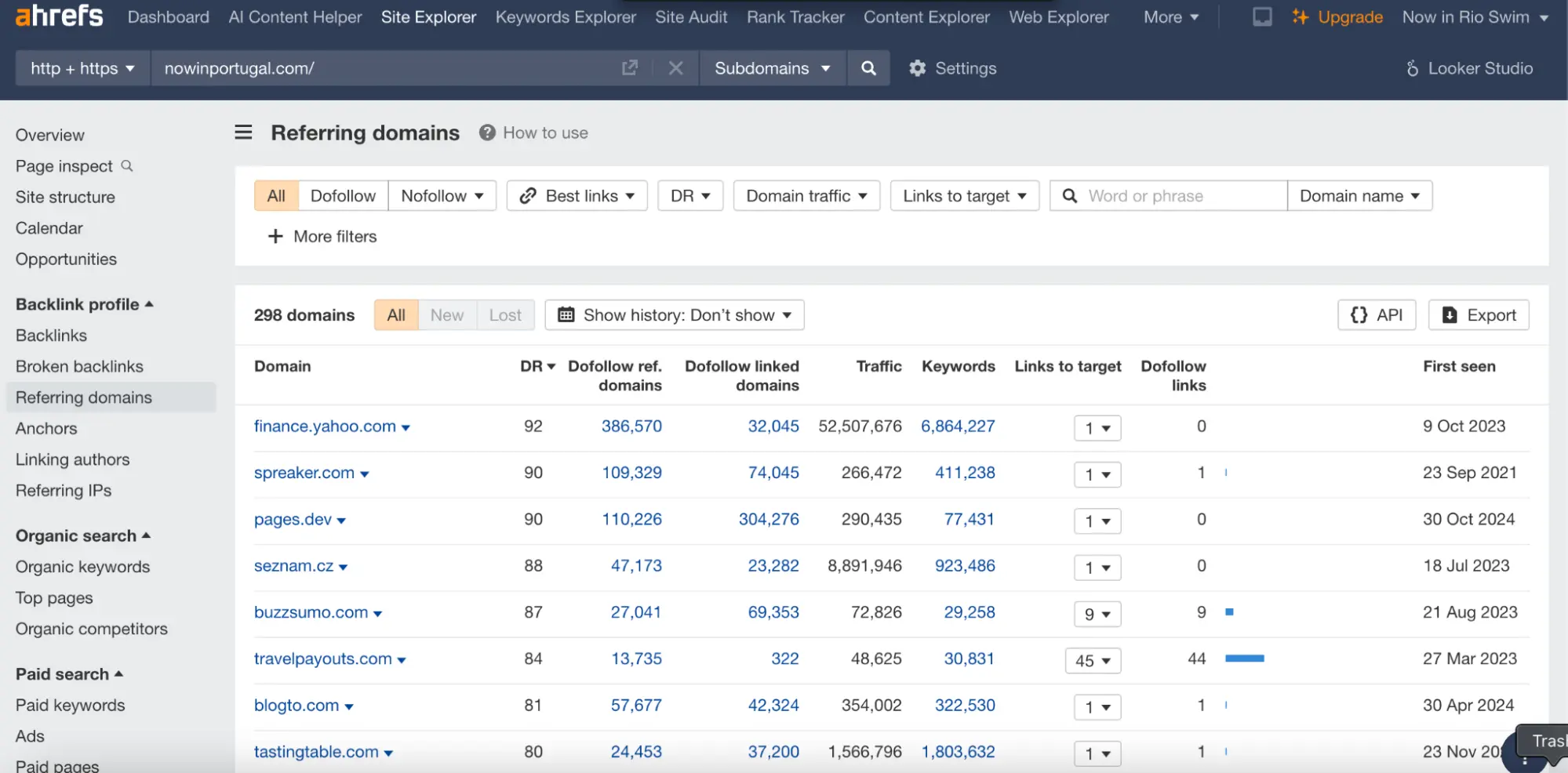
Consider backlinks in your content strategy
If certain content attracts high-quality backlinks, try creating more of the same or expanding on successful topics. This can naturally attract more backlinks.
🌟 Quick tip: Repurpose popular content into different formats, like turning a hit blog post into a video or infographic to reach new audiences and score extra backlinks. Keeping your top content fresh and up-to-date also helps, making people more likely to keep sharing and linking back.
Stay on top of lost or broken links
Sometimes, links go missing or break. If this happens, contact the site owner and provide an updated link or an alternative page to keep that backlink intact.
🌟 Quick tip: You can turn broken links into a link building strategy by targeting your competitors’ broken links. Tools like Semrush let you find broken links pointing to your competitors’ sites. If you see a broken link to content similar to yours, contact the linking site and suggest your article as a replacement. This approach benefits the site owner by fixing a broken link and gives you a new backlink.
Analyze traffic from backlinks
Backlinks don’t just help with SEO – they can also drive direct referral traffic. You can analyze this in Google Analytics by navigating to Reports > Acquisition > Overview and filtering by session manual source. This shows you which sites drive traffic to you, although not on the level of individual links.
FAQ
How do backlinks affect my website’s ranking?
Backlinks impact your site’s ranking because search engines see them as votes of credibility. Links from high-authority, relevant sites signal to search engines that your content is valuable, which can boost your ranking. Each quality backlink passes some of its “authority” (often called “link juice”) to your site.
Higher-quality backlinks generally mean a higher chance of ranking well in search results. However, links from spammy or low-quality sites can hurt your ranking, so regularly monitoring your backlink profile is critical.
How often should I check my backlinks?
Ideally, you should check your backlinks at least once a month. This helps you quickly spot new, lost, or potentially harmful links. You might want to check even more frequently if you’re actively building links or have a large site.
How can I see how many backlinks a website has?
There are free and paid tools that tell you the total number of backlinks pointing to a site and let you analyze factors like anchor text variety. See our discussion above, or for a deeper dive, check out our article here.
How can I check the quality of my backlinks?
Check the quality of your backlinks by evaluating the authority of the linking sites, relevance to your niche, and anchor text variety. Tools like Moz, Ahrefs, and Semrush assign authority scores, helping you evaluate the links.
How can I get high-quality backlinks for my website?
Beyond simply creating valuable content others want to link to, building a high-quality profile involves strategies like guest posting on reputable sites and doing backlink exchanges with relevant websites. For a deeper dive, check out our complete guide to backlink exchanges.





